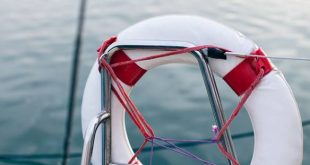Going on a hiking or camping trip is a great way to get in touch with nature and explore sights you’ve never seen before. There are plenty of eye-catching flora and fauna that you’ll find around your campsite, so capture these moments using your phone or camera! Whether you’re catching a glimpse of birds in flight or sleeping critters before they wake up in the morning, learn how to photograph wildlife safely during your next camping trip.
Keep a Safe Distance
Always respect the animals’ space and avoid getting too close, which will protect both you and the wildlife. When you see an animal in the distance, use a zoom lens to capture detailed shots without disturbing their natural behavior. Give them room to move freely while you photograph from a safe spot.
Blend Into Your Surroundings
Bright fabrics draw the eyes of small critters, and they may run away before you get a chance to capture the perfect shot. Wear neutral or earth-toned clothing to avoid catching the attention of the animals. With these garments, you’ll blend seamlessly into the environment, which will allow you to get more natural shots of the wildlife without startling them.
Avoid Using Flash
Using a flash can scare animals and disrupt their environment, especially if you turn it on in low lighting. Instead of using your camera’s flash, take advantage of natural lighting instead. Early mornings or late afternoons, known as the golden hours, provide soft, natural light perfect for photography.
Be Quiet and Patient
To photograph the wildlife safely during a camping trip, keep your voice down! Noises can frighten animals and cause them to flee. Once you find your subject, stay patient, observe, and wait for the right moment to capture the perfect shot.
Protect Your Gear
Even after you’ve checked the forecast before your camping trip, the weather can be unpredictable. Carry waterproof cases or covers to protect your gear from rain, dirt, or dust, especially if you plan to use your phone for mobile photography. This makes sure that your equipment stays in good condition, even in rugged outdoor conditions.
Use Night Vision for Nocturnal Wildlife
Want to photograph animals after sunset? Consider the different types of night vision systems to capture nocturnal creatures without using a disruptive flash. These tools will help you photograph wildlife in low-light conditions responsibly.
Follow “Leave No Trace” Principles
As you set up your campsite, be mindful of the environment and other travelers around the area. Never feed the animals or alter their habitat for a better photo. Always follow Leave No Trace principles to respect the environment and keep the site clean for others to enjoy.
Taking photos of your camping trip provides you with memorable souvenirs you can enjoy long after you return home. After choosing the best shots, frame the photographs and hang them where you can enjoy them every day. These photos serve as the perfect reminder of the places you visited and the furry friends you met during your adventure.

 World inside pictures Collect and share the best ideas that make our life easier
World inside pictures Collect and share the best ideas that make our life easier





